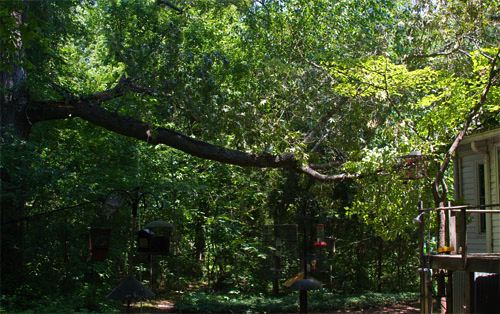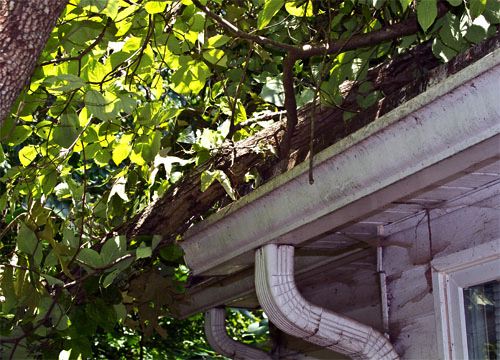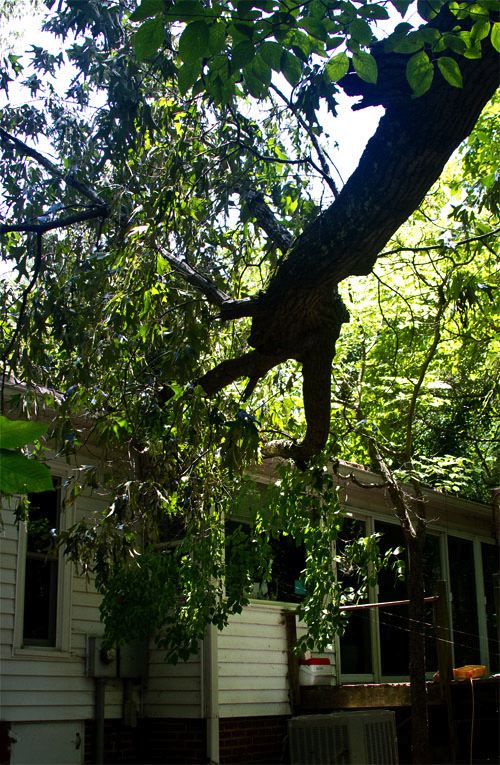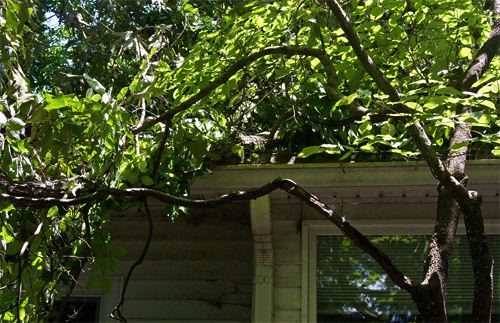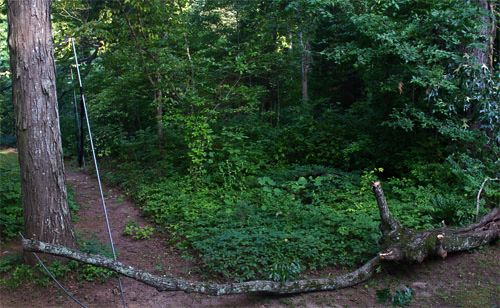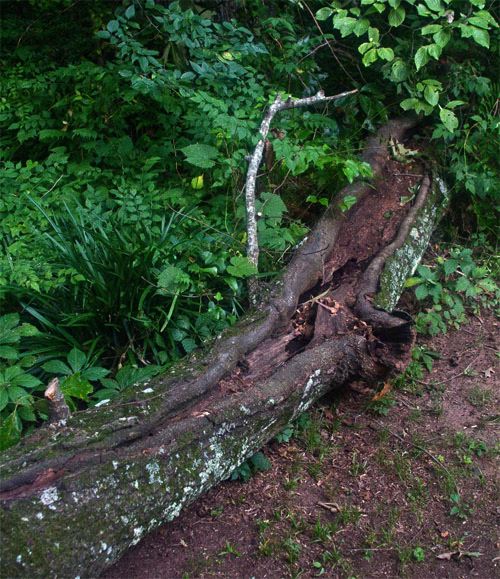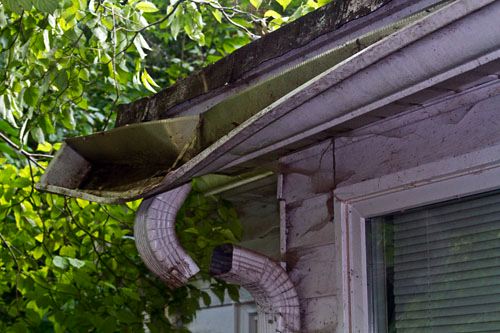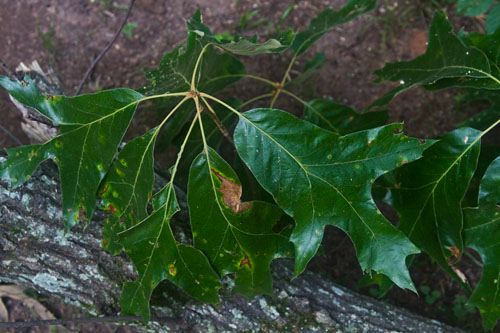|
|
|||
|
(Back to Preceding Week; on to Next Week) |
|
|
|
WHEN TREES GET OLD: We were away from Hilton Pond Center several days this week, returning after dark on 19 July when it was too late for our customary walk about the property. As we sat at our desk that evening to check e-mails and handle backlogged tasks, the usually idyllic view of the pond from our office revealed only blackness. Just as we were about hit the sack following a long day of driving, we glanced out a narrow bathroom window that also overlooks the pond and noticed something unusual: Dogwood leaf clusters hanging near the glass. Normally that window is shaded by a Flowering Dogwood, so we suspected a recent rainstorm had simply weighed down the branch. Too tired to investigate further, we went off to bed about midnight--unaware the dogwood would have a bigger and more painful tale to relate the following morning. Ouch!
All text & photos © Hilton Pond Center We slept in on 20 July, got up and checked the weather station at 9 a.m. to learn the temperature was already 82 degrees with a stifling dew point of 73, and decided this probably would NOT turn into a good day for strenuous outdoor work. (In fact, most of July has been particularly miserable in the Carolina Piedmont, with high humidity and temperatures in the upper-90s that have made it inadvisable to operate mist nets.) After breakfast, however, we remembered our late night observation of dogwood leaves and went out on the back deck of our old farmhouse to see what we could see. Needless to say, we were shocked to find the dogwood branch had been forced close to the bathroom glass by a branch 40' long and 22" in diameter (above)--a massive limb that had fractured 20' up the trunk of a towering Southern Red Oak tree, Quercus falcata, and fallen toward the house.
All text & photos © Hilton Pond Center This damaged limb was still attached at its base but its tip balanced precariously on the roof just above our office window (above). While the roof looked undamaged, it seemed this delicately poised mass of wood could fall at any moment--easily ripping off the gutter, gouging the house siding, shattering several double-pane windows, splintering the deck, and playing havoc with feeders, nets, and traps just beneath it.
All text & photos © Hilton Pond Center We cautiously entered the backyard--being careful NOT to stand too close to the oak--so we could assess what we perceived as a real danger. We had long suspected this particular limb might eventually cause a problem because sometime in the distant past, i.e., prior to our arrival at Hilton Pond in 1982, someone had done a very bad job of trimming the branch. Apparently untrained arborists had hacked off the main part of the big limb about 20' from the trunk, leaving a nub that branched off grotesquely in four different directions (above). These new branchings all lengthened, creating an unnaturally large mass of twigs and leaves, and this year the original branch seems to have reached its "breaking point." Perhaps because of additional stress from wind and rain-saturated bark, the limb became too heavy to support itself and broke at its base.
All text & photos © Hilton Pond Center After surveying and photographing the situation, we concluded we had three courses of action. First, we could do nothing and wait to see what would happen as gravity took its toll on the highly stressed 4"-diameter limb tip that rested on the roof. This seemed to be the least appropriate choice, primarily because if the branch fell suddenly it could cause all the gutter, siding, window, deck, and net damage mentioned above. The second scenario would be to call a professional tree surgeon who would arrive with a crew, heavy equipment, and ropes and pulleys that might allow the branch to be cut into sections and removed. We discounted this alternative because, quite frankly, tree surgeons are expensive and Hilton Pond Center has insufficient financial resources to hire one. Our third possibility was to use our own ladders, pruning shears, and saws and tackle the job in-house, which--after careful consideration--we ended up doing.
All text & photos © Hilton Pond Center Our first task was to climb onto the roof to make sure there were no structural problems and to understand fully what we were dealing. The old metal roof turned out to be sound, but atop it the broken limb had created a tangle of oak and dogwood branches and leaves (above). Even though the old dogwood was somewhat damaged, we hoped to save it; the cooling shade this tree casts on our office window makes it invaluable--especially at this time of year. With lopping shears we spent a couple of hours judiciously pruning the dogwood and cutting off all the oak branches we could reach, tossing this biomass to the ground to form a pile that was eventually 15' across and 6' tall. That, we might point out, was a LOT of leaves. When this task was complete we climbed down from the roof and gently balanced a 16' extension ladder at several points along the length of the broken oak limb, again pruning away leafy twigs that might cause additional damage if the big branch fell. (We're grateful it didn't choose to fall while we were 15 feet off the ground.) Satisfied we had eliminated all vegetation we could safely prune, we removed the extension ladder and retreated to the back deck for another close view of the distal end of the branch. The massive limb, held up only by a relatively flimsy branch 4" in diameter, was beginning to sag toward the house, so we broke out our pole saw and carefully began cutting its top edge a couple of feet away from the roofline. We figured we would end up sacrificing part of the gutter if we continued this course of action, but that was the least of our concerns.
All text & photos © Hilton Pond Center After making an inch-deep notch in the top of the 4" branch, we flipped the saw over and very, very slowly began cutting the bottom edge. As we push the pole saw back and forth we could hear the broken limb creaking against the roof until suddenly the branch snapped and the giant limb plunged downward, hit the earth with a loud, bone-jarring, seismic thud, and bounced 90 degrees back toward the oak tree whence it came (above). In the process it demolished one net pole, slightly bent another, and stopped just short of plowing into a big Shagbark Hickory tree.
All text & photos © Hilton Pond Center With the big limb at ground level we were able to examine it more closely and spotted some things that weren't visible as it teetered above. For one, along the top edge was a deep gash (above), extending from the trunk to the point where that inelegant pruning had been done long ago. We suspect when that historical cut was made it introduced fungi that for more than 30 years had been diminishing the structural integrity of the wood. It was only a matter of time before this big oak branch--with a rotten top margin--became too weak to support its own weight. We spent several hours that day and the next cleaning up all the fallen twigs and leaves and surgically pruning two dogwoods that were damaged at either end of the big limb. When the weather breaks--and we hope for lots of reasons that's very soon--we'll crank up the ol' chain saw and cut the oak branch into two-foot lengths, some of which will have to be split so they'll fit the wood stove with which we heat our Hilton Pond farmhouse in winter.
All text & photos © Hilton Pond Center The falling oak limb broke pullstrings to two hummingbird traps, ruined one net pole, and tore down a section of gutter--a much better outcome than could have occurred. Fortunately, the bent gutter appears to be fixable and the net pole can be replaced, but it still hurts to know we lost an oak limb that's bigger than most of the trees at Hilton Pond Center. Worse yet, there's now a big hole in the sky where oak leaves once cast substantial shade on a water garden, two net lanes, and our office roof. With the summer of 2010 getting hotter by the day that's not a pleasant thought, so we say OUCH!--for the oak tree AND for us.
All text & photos © Hilton Pond Center
|


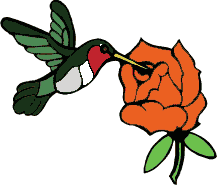 "HUMMINGBIRD MORNINGS"
"HUMMINGBIRD MORNINGS"